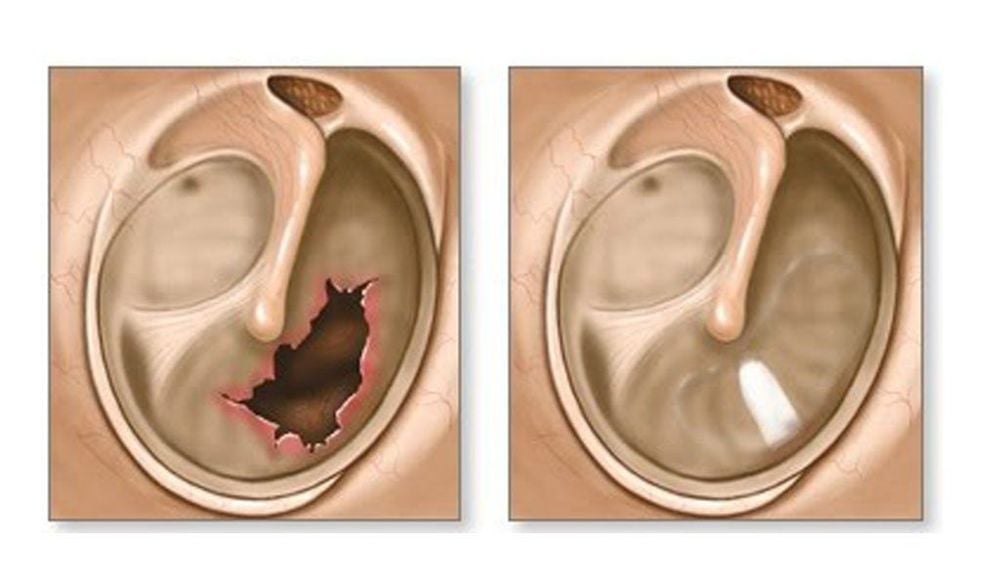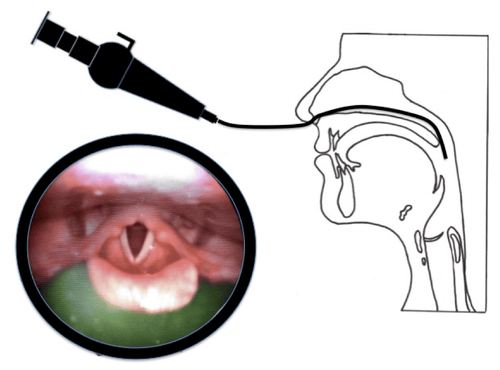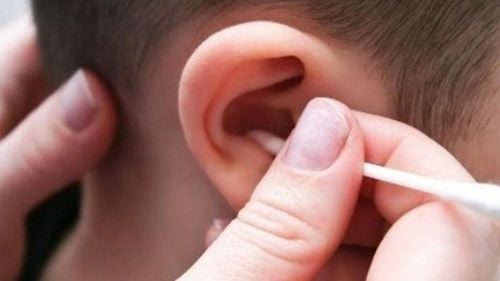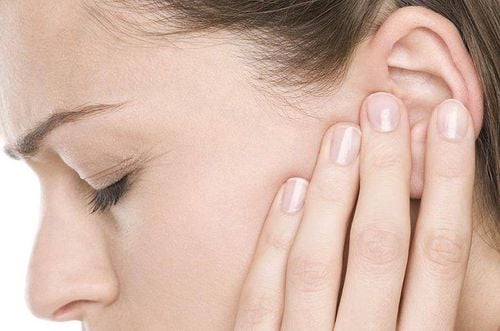This is an automatically translated article.
The article was professionally consulted by Specialist Doctor of Otolaryngology - Department of Medical Examination and Internal Medicine - Vinmec Hai Phong International Hospital.
Eardrum patch surgery is a procedure used to repair holes or tears in the eardrum. Atrial patch surgery is also used to repair or replace 3 very small bones behind the eardrum. Usually, tympanic membrane patching is performed under a surgical microscope, recently some doctors have used endoscopic tympanic membrane patching system for ear surgery.
1. What is the eardrum?
The eardrum is a very thin membrane that separates the outer and middle ear. When a sound wave hits the eardrum, the eardrum vibrates depending on the intensity of the sound wave. Ear infections, surgery, or trauma to the ear can damage the eardrum (and even perforate the eardrum) or the bones of the middle ear, so surgery is needed. Damage to the eardrum can result in hearing loss and an increased risk of ear infections.
2. What is eardrum patch surgery?
If the eardrum has a hole or small tear, the doctor may first seal the hole with a gel or paper-thin tissue. This procedure usually takes 15 to 30 minutes and needs to be carried out in specialized medical facilities with local anesthesia for the patient.
However, if the perforation of the tympanic membrane is large or if the patient has a chronic ear infection that cannot be treated with antibiotics, an eardrum reconstruction should be performed. The patient requires hospitalization and the procedure is performed under anesthesia.
The doctor will use a laser to remove excess tissue or scar tissue that forms in the middle ear. Then, a small piece of tissue is taken from the patient's own vein or sheath of muscle fibers and grafted onto the eardrum to repair the hole. Your doctor will probably operate through the ear canal to repair the eardrum or will make a small cut in the back of the ear and access the eardrum from that direction. This procedure usually takes 2-3 hours. Today, the endoscopic tympanic membrane technique shortens the treatment time for patients.

3. Complications of eardrum patch surgery
Common risks include: bleeding, infection at the surgical site, allergic reactions to drugs and to the anesthetic used during surgery. Complications characteristic of tympanic membrane surgery are rare, but not unheard of, and include:
Damage to the facial nerve or the nerve that controls taste; Damage to the bones of the middle ear, leading to hearing loss; Dizzy; Perforation of the eardrum is not completely healed; Moderate or severe hearing loss; There is excess skin that develops behind the eardrum, called a cholesteatoma.
4. Preparation for eardrum patch surgery
Patients are clearly explained about possible complications during and after surgery; Made in ear medicine and cut the hair back (top of the earlobe) 2 cm from the hairline; Do blood count tests, coagulation tests, blood sugar tests, blood urea tests; Report to the doctor if you have an existing medical condition: high blood pressure, diabetes, tuberculosis...; Tell your doctor about any medications and supplements you are taking. You should also tell your doctor about any allergic conditions you have (allergy to drugs, anesthetics or latex); If the patient is sick or feeling unwell, they should also tell the doctor. In this case, the surgery will probably be postponed until the patient feels better; Do not eat or drink anything after midnight the day before surgery. If you need to take medicine, take a small sip of water.
5. Care after atrial patch surgery

Patients with postoperative pain usually have moderate pain, pain medication can be given for about 2-3 days. If the pain is severe, watch out for hematoma or infection. Use prophylactic antibiotics intravenously or orally for 5 days. Remove the wick and cut the thread after 7 days.
After surgery, the doctor will insert cotton into the patient's ear, which may have to be inserted within 5-7 days after surgery. A gauze dressing may also be placed on the outside, covering the ear to protect it. People who have undergone eardrum patch surgery are usually discharged from the hospital as soon as the surgery is done.
After surgery, the patient may be prescribed some types of ear drops. Then gently remove the bandage and cotton and put the medicine in the ear. Change the gauze regularly and do not put anything in the ear.
During recovery, the patient should avoid getting water into the ear. Avoid swimming, if you have to come into contact with water, wear a swimming cap to avoid water getting into your ears. Do not pick your ears or blow your nose. If you need to sneeze, sneeze and open your mouth so as not to increase pressure in your ears. Avoid going to crowded places and places where many people are sick.
After surgery, the patient may feel a sharp pain in the ear or feel the ear is full of fluid or may also hear some strange sounds coming from the ear. These symptoms are usually mild and should improve after a few days.
6. Success rate of atrial patch surgery
In most cases, tympanic membrane surgery has a high success rate. According to the Columbia University Medical Center, more than 90% of patients recover from surgery without complications. Only 2-4 patients per 1000 will experience persistent hearing loss after eardrum surgery. If, in addition to the tympanic membrane, the small bones of the middle ear also need to be repaired, the outlook may not be as good as repairing each eardrum.
7. Where is the best place to have eardrum patch surgery?
At Vinmec Central Park International General Hospital, endoscopic or open eardrum patching surgery is performed depending on the condition and needs of the patient.
Vinmec Central Park gathers leading medical experts at home and abroad, a team of doctors with high professional qualifications, good skills, always enthusiastic, dedicated and wholeheartedly for the benefit of patients. Modern technical equipment system, optimal support for diagnosis and treatment. The medical examination and treatment space is modern, luxurious, polite and has an optimal infection control system. Professional medical service quality, bringing satisfaction and comfort to customers.
Please dial HOTLINE for more information or register for an appointment HERE. Download MyVinmec app to make appointments faster and to manage your bookings easily.













